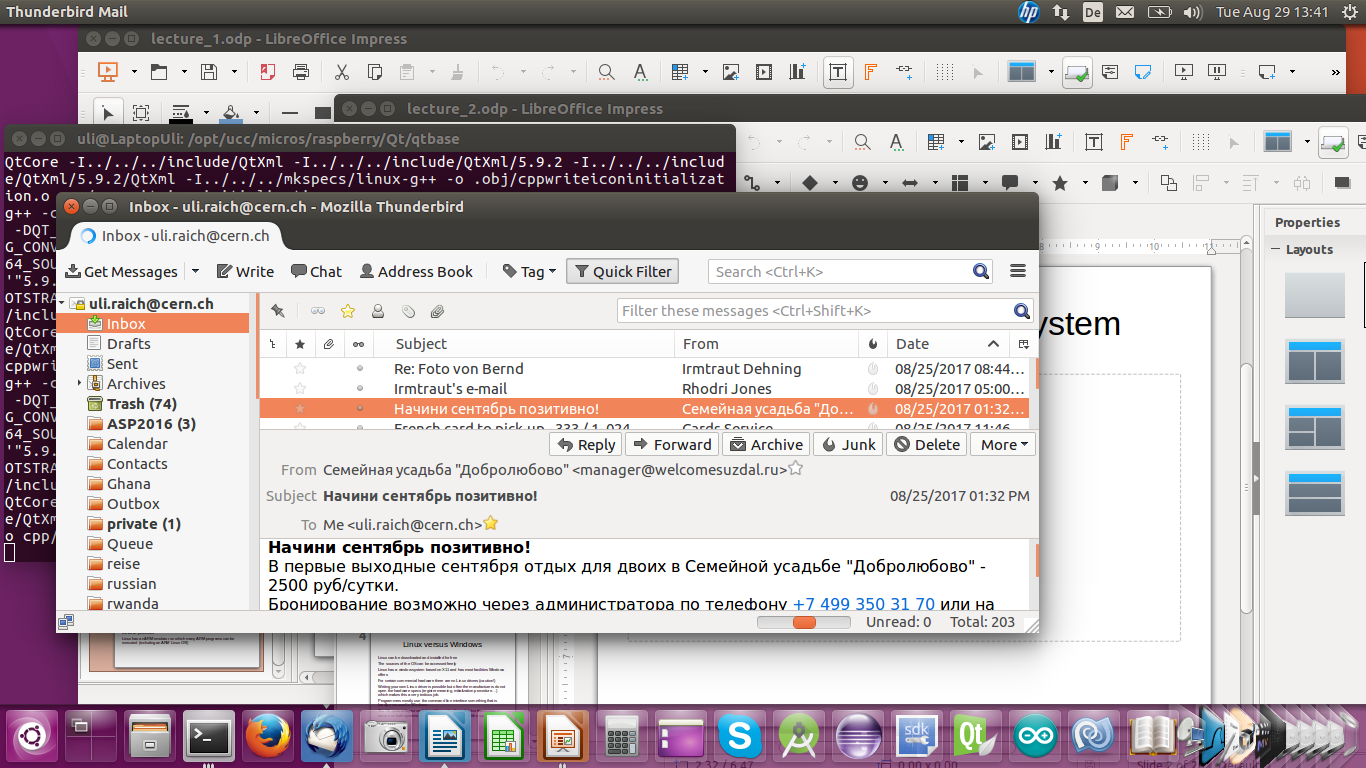
Slide 1: The Linux Operating System
Lecture 2
Uli Raich
Slide 2: Starting the Linux System
This is how the screen may loop like after some programs have been started
Slide 3: Linux Distributions
Linux comes in many flavors (distributions) which may be different of how they are configured,their desktop, their software repository, their target user community beginners, gurus, programmers, desktop, server … Here are some distributions:
Ubuntu (which we use), Mint, Debian, RedHat, Fedora, Kali...
Slide 4: Linux versus Windows
Linux can be downloaded and installed for free The sources of the OS can be accessed freely Linux has a window system based on X11 and has most facilities Windows offers For certain commercial hardware there are no Linux drivers (caution!) Writing your own Linux driver is possible but often the manufacturers do not open thehardware specs (register meaning, initialization procedure…)
which makes this a very tedious job. Programmers mostly use the command line interface something that is hardly ever used in Windows.
The file system layout on disk is different (ext4 vs ntfs) but there exist drivers on both systems reading and writing the others files systems
Slide 5: Linux Command Line
When you start up a terminal window, you start a command shell with it.We will be using bash When you type a command, bash will check if it is a command implemented in bash,
in which case it is executed immediately,
otherwise a new process is created, the command loaded and executed After termination of the command the process is removed again. Either bash waits for termination of the process
or it is run in parallel (“&” after the command) Where are the commands and how many are there?
Slide 6: Most used Linux Commands
Here are a few very frequently used comnmands| Command | Action |
|---|---|
| ls | List directory content |
| cat, less, more | Print content of a text file |
| mkdir | Create a directory |
| cd | Change working directory |
| pwd | Print current working directory |
| echo | Print variable |
| vi, nano, emacs, gedit ... | Edit a text file |
| rm, rmdir | Remove a file / directory |
| grep | Search for a string in files |
The environment variable PATH tells the system where to look for commands.
The number of commands is unlimited since you can write your own commands
and include them into the system. --
Comments
| I | Attachment | History | Action | Size | Date | Who | Comment |
|---|---|---|---|---|---|---|---|
| |
binaries.png | r1 | manage | 65.4 K | 2017-09-05 - 16:14 | UnknownUser | |
| |
mainScreen.png | r1 | manage | 332.6 K | 2017-09-05 - 16:01 | UnknownUser | |
| |
permissions.png | r1 | manage | 14.4 K | 2017-09-05 - 16:14 | UnknownUser | |
| |
startButton.png | r1 | manage | 5.5 K | 2017-09-05 - 16:01 | UnknownUser | |
| |
ubuntuSoft.png | r1 | manage | 427.2 K | 2017-09-05 - 16:14 | UnknownUser |
Ideas, requests, problems regarding TWiki? Send feedback



